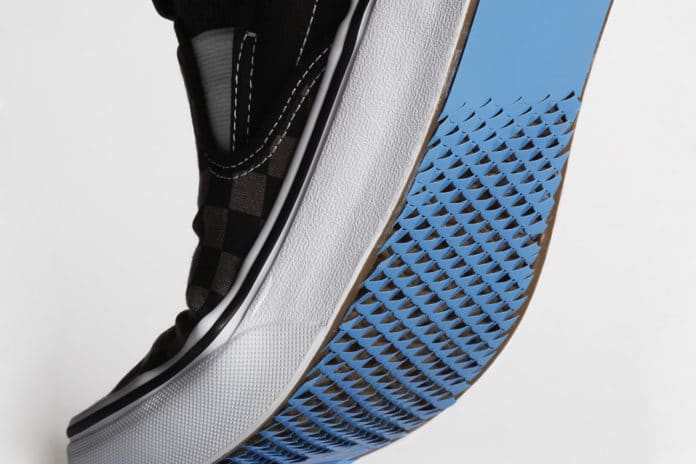A group of engineers at MIT and the Harvard John A. Paulson School of Engineering and Applied Sciences (SEAS) have developed pop-up shoe grips inspired by snake skin that can increase friction between the shoe and the ground. These anti-slip assistive grips could be used to coat the bottom of your shoes, potentially reducing the risk of falling on ice and other slippery surfaces, especially among the elderly.
According to the engineers, the new invention could reduce the risk of falls, the leading cause of death for older adults and the second leading cause of occupational-related deaths. It could not only save lives but also save billions of dollars in medical bills every year.
Inspired by the Japanese paper-cutting art of kirigami, the grip is made of a thin, flexible steel sheet with a pattern in the form of snake scales. This pattern consists of dozens of interconnected scale-like cuts.
These sheets, applied to the sole of a shoe, remain flat while the wearer is standing. When the shoe bends and stretches along the soles – for example, when the weight is transferred from the heel to the toe – the cuts pop out into spikes that dig into the ground and create friction. When the foot flattens, the spikes fold back into the material, creating a smooth surface again.
Also, engineers argue that such a sole is more effective than spikes to prevent falling, although it is much lighter than them. In addition, the Kirigami-inspired grip increases friction between shoes and the surface by 20-35% than the friction generated by the shoes alone. The device is much easier to take on and off than leading commercial crampons, and it also outperformed them in creating friction.
“These lightweight, kirigami metasurfaces could play an important role in public health to mitigate slipping and falling in a range of different environments,” said Katia Bertoldi, the William and Ami Kuan Danoff Professor of Applied Mechanics at SEAS. “They could also be used to improve the mobility of all-terrain robots that could one day travel across difficult environments for search and rescue missions.”
The researchers are now working on determining the best way to attach and incorporate the anti-slip assistive grips on the shoes. For example, it can be embedded into the soles directly or can be designed as a separate element that could be attached when needed. The team is also exploring the possibility of using different materials, such as a rubber-like polymer with a reinforced steel tip.
